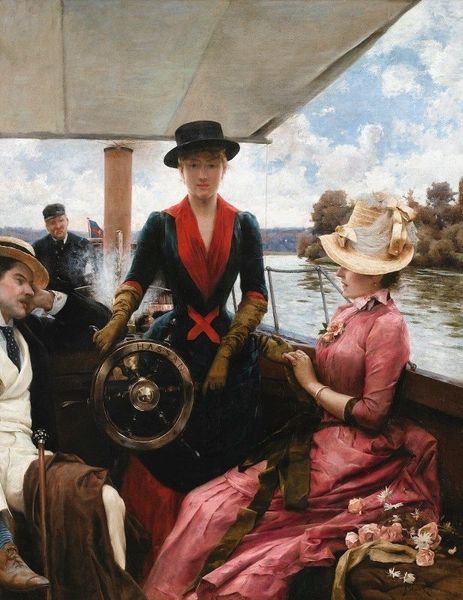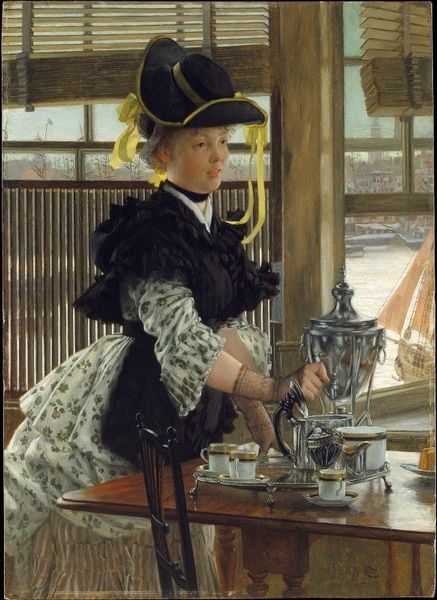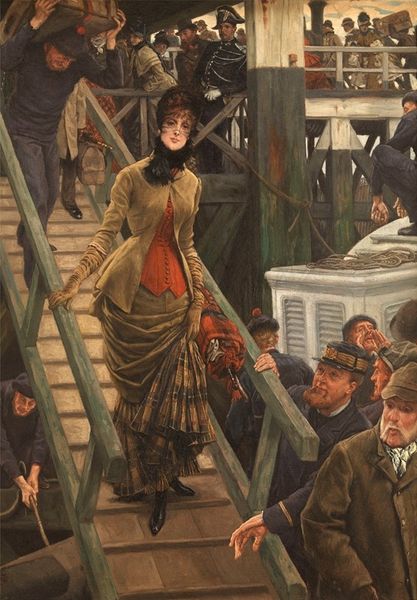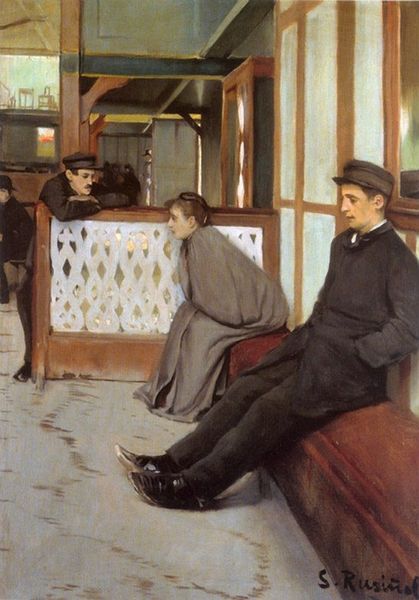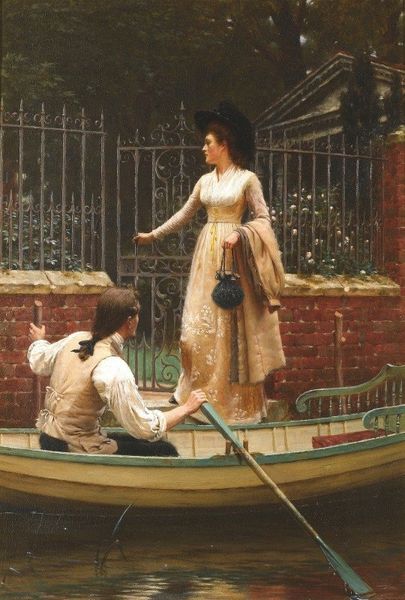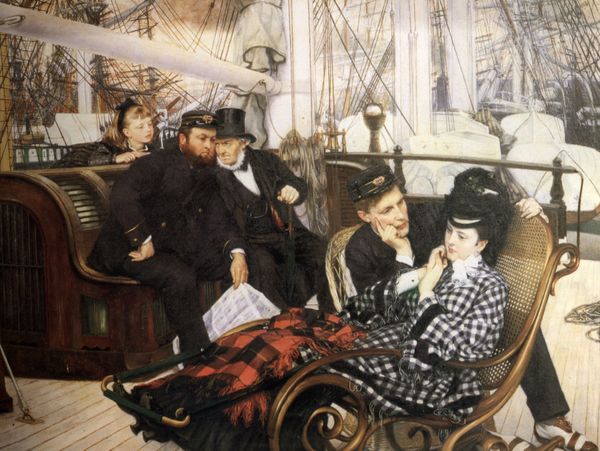
Dimensions: 81 x 61 cm
Copyright: Public domain
Curator: Julius Leblanc Stewart's "Full Speed," painted in 1886, presents us with a vivid glimpse into leisurely life, likely among affluent circles. Editor: The impression I get immediately is a snapshot of feminine leisure, bathed in sunlight. There’s a feeling of both freedom and constraint—are they really navigating their own lives? Curator: It's fascinating to consider how Stewart captured this scene. Look at the confident brushstrokes used to render the fabric, versus the details of the machinery. He masterfully plays with textures using oil paint to define social strata and economic output. How are these commodities produced, by whom, and consumed? Editor: That's a good point, we see two women at the helm or… perhaps one is truly in control and the other an ornament? Notice how their attire seems designed as much for display as for function. And, crucially, a male figure hovers behind in a lower visual stratum as if monitoring their activity. What labor is performed that makes this recreation possible, and by whom? What's really at “full speed” here, their liberty or the process that contains it? Curator: We can’t forget the material reality of leisure, which of course demands manufacturing power to be supported. And how gender becomes enmeshed in systems that include manufacturing but exclude women from the position of laborers while portraying their ownership. Look closely, you can see where he’s laid thick applications and scrapings of paint – a clear physicality and manipulation of the material—emphasizing the tangible craft behind capturing fleeting, leisurely moments. Editor: Right, that's interesting in juxtaposition. There's a definite contrast there. This almost casual snapshot raises complex questions about the gaze, about gender roles and representation, and about the silent structures propping up moments of what appears to be straightforward, opulent delight. Curator: Exactly, so the painting really encapsulates how art can make its audience really ponder materiality of everyday existence for certain communities and not others at the turn of the century, who can participate, how and why. Editor: It makes you wonder about who truly experiences “full speed,” and at whose expense. Curator: Yes, absolutely. And the tangible value assigned, how luxury operates materially through objects, through gender. It’s a fascinating peek behind the curtain of turn of the century high society.
Comments
No comments
Be the first to comment and join the conversation on the ultimate creative platform.
